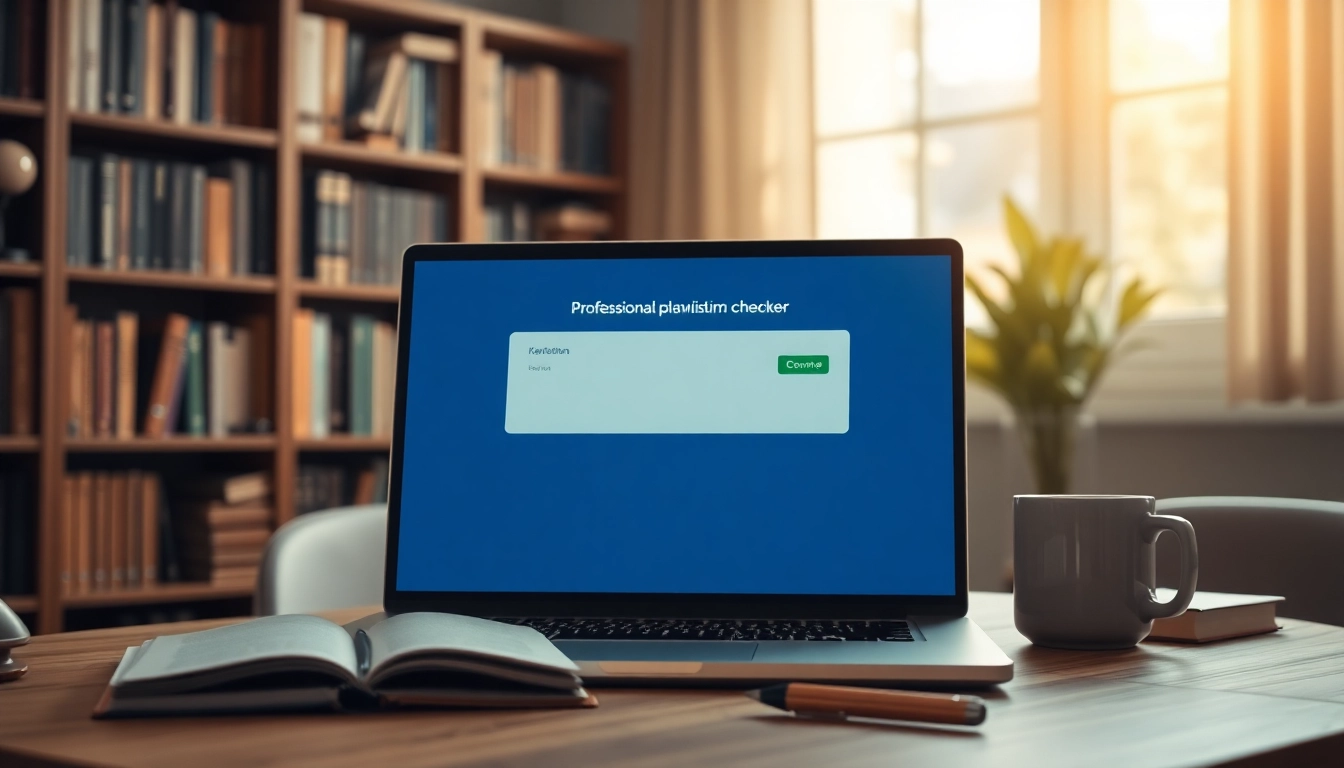Understanding Plagiarism and Its Implications
Plagiarism is a pervasive issue in both academic and professional writing, impacting the integrity of individuals and institutions alike. Comprehending what constitutes plagiarism and its consequences is essential for students, educators, and content creators. Utilizing a plagiarism checker can significantly aid in avoiding this ethical pitfall.
What is Plagiarism?
Plagiarism occurs when an individual presents someone else’s work, ideas, or expressions as their own without proper attribution. This can involve copying text, paraphrasing too closely, or failing to cite sources. The act of plagiarism undermines the trustworthiness of the educational and creative processes, and it can lead to serious penalties, including academic failure or legal action.
Types of Plagiarism to Avoid
Understanding the various forms of plagiarism is critical for anyone engaged in writing. The main types to be aware of include:
- Direct Plagiarism: Copying text verbatim without citation.
- Self-Plagiarism: Reusing one’s own previously submitted work without permission.
- Partial Plagiarism: Using parts of another’s work without proper attribution.
- Accidental Plagiarism: Unintentionally failing to cite sources or miscrediting work.
The Impact of Plagiarism on Academic Integrity
Plagiarism can severely damage academic integrity. Institutions that tolerate plagiaristic behavior may face diminished credibility in the academic community. Students caught plagiarizing may face penalties ranging from failing grades to expulsion, ultimately affecting their academic careers. Ethical writing is not merely a rule; it is an essential component of scholarly discourse.
How a Plagiarism Checker Works
Plagiarism checkers employ various technologies to analyze text for similarities with existing works. These tools are indispensable in ensuring that both intentional and accidental plagiarism is detected before submission.
Analyzing Text for Similarity
A plagiarism checker examines the submitted text and compares it against vast databases of published works, online articles, and academic papers. Using sophisticated algorithms, it identifies overlapping phrases, sentences, and ideas.
Common Algorithms Used in Detection
Different plagiarism checkers utilize a range of algorithms, such as:
- String Matching: Identifies exact matches between submitted text and existing sources.
- Semantic Analysis: Goes beyond surface-level matching, understanding content context and similarities in themes or ideas.
- Machine Learning: Enhances detection techniques by learning from user uploads and corrections.
Understanding Reports Generated by Plagiarism Checkers
The reports provided by plagiarism checkers usually highlight potential matches, showing the original sources alongside the copied text. Users can then analyze the results to determine whether they need to revise their work or add proper citations. A comprehensive report typically includes:
- Percentage of matched content.
- Source links showing where the matches occur.
- Suggestions for citation or rewriting.
Choosing the Right Plagiarism Checker for Your Needs
With numerous plagiarism checkers available, selecting the one that best suits your needs can be daunting. Here are essential considerations when evaluating your options:
Comparing Features of Popular Tools
Popular plagiarism checkers vary widely in features. Key aspects to consider include:
- Database Size: A larger database increases the likelihood of comprehensive checks.
- Detection Capabilities: Some tools are better at detecting paraphrased content.
- Integration: Consider whether the checker integrates with word processors or learning management systems.
Cost vs. Free Options
Free plagiarism checkers may suffice for casual users, but they often lack the depth and precision of paid tools. Paid checkers typically offer extensive databases, advanced algorithms, and better user support, making them worth the investment, especially for students and professionals.
User Reviews and Recommendations
Before deciding on a plagiarism checker, it is wise to consult user reviews and expert recommendations. Testimonials from students and professionals can provide insights into the effectiveness of a tool and help identify any potential issues or limitations.
Best Practices for Avoiding Plagiarism
While plagiarism checkers serve as a helpful backup, adopting proactive strategies is vital in avoiding plagiarism altogether.
Effective Citation Strategies
Properly citing sources is fundamental to maintaining academic integrity. Familiarize yourself with citation styles such as APA, MLA, and Chicago to ensure all references are appropriately attributed. Acknowledging the original creators of ideas not only honors their work but also enhances your credibility.
Paraphrasing Techniques
When incorporating others’ ideas without quoting directly, effective paraphrasing is crucial. To paraphrase effectively, understand the original text fully, then rewrite it in your own words while preserving the meaning. Always follow up with appropriate citations to avoid unintentional plagiarism.
Maintaining Originality in Your Work
To preserve originality, focus on developing your unique perspective and voice. Engage deeply with the source material, synthesizing information from multiple viewpoints, and contributing your analysis. Continuous practice and dedication to your craft will help develop your writing style, thereby reducing reliance on existing texts.
Evaluating the Accuracy of Plagiarism Checkers
Understanding how to evaluate and measure the effectiveness of plagiarism checkers is crucial for users seeking reliable tools.
Testing Different Tools: A Case Study
Consider conducting a case study by running the same document through multiple plagiarism checkers to compare results. This approach allows you to gauge the detection accuracy and usability of each tool, providing insight into which might be best suited for your needs.
User Feedback and Effectiveness
Regularly examine user feedback about plagiarism checkers to gauge their effectiveness over time. Changes in algorithms, updates, and user experiences can all impact a tool’s performance. Forums and dedicated review sites can help shine a light on the most current and reliable tools.
Future Trends in Plagiarism Detection Technology
The landscape of plagiarism detection is continually evolving, driven by advancements in artificial intelligence and machine learning. Future tools are likely to feature improved context analysis, integrate more seamlessly with text editors, and offer personalized writing feedback to enhance originality. Staying informed about these trends can empower users to select the most effective plagiarism checking solutions as they develop.
